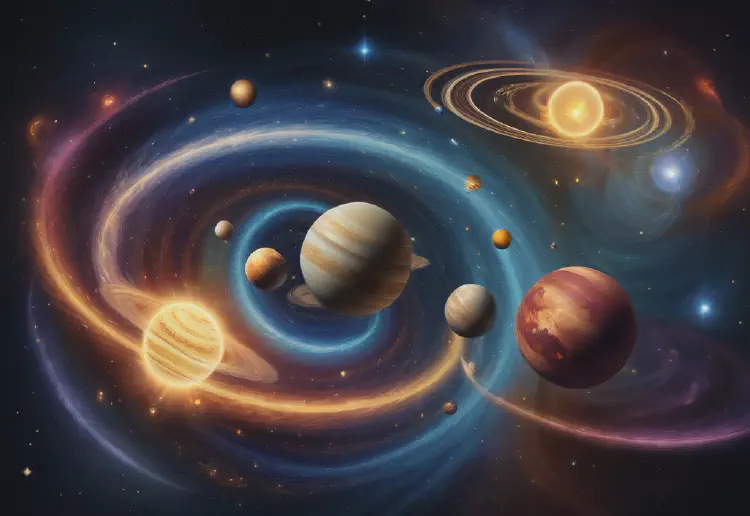The Enigmatic Dance of the Celestial Bodies
Explore the intricate movements and relationships of celestial bodies in the cosmos.
- Elara Starweaver
- 3 min read

The universe is a grand stage where celestial bodies perform an intricate dance, governed by the laws of physics and the forces of gravity. From the majestic orbits of planets around their stars to the graceful spirals of galaxies, the movements of these cosmic entities tell a story of creation, evolution, and the interconnectedness of all things.
The Basics of Celestial Mechanics
Celestial mechanics is the branch of astronomy that deals with the motions of celestial objects. It encompasses the study of the gravitational interactions between bodies, such as planets, moons, asteroids, and comets. Understanding these movements allows astronomers to predict the positions of celestial bodies and comprehend the dynamics of our solar system and beyond.
The Dance of the Planets
In our solar system, the planets engage in a harmonious ballet around the Sun. Each planet follows a unique elliptical orbit, influenced by the gravitational pull of the Sun and the other planets. This gravitational interplay creates a delicate balance, ensuring that the planets maintain their paths while also affecting one another’s movements. The beauty of this dance is not only in the orbits themselves but also in the way they interact, leading to phenomena such as planetary conjunctions and oppositions.
The Role of Moons
Moons play a significant role in the celestial dance, acting as companions to their parent planets. The gravitational pull between a planet and its moon creates tidal forces that can influence both bodies. For example, Earth’s moon affects ocean tides, while the gravitational interactions between Jupiter and its many moons contribute to the stability of the planet’s atmosphere. The relationship between planets and their moons adds another layer of complexity to the cosmic choreography.
The Spiral of Galaxies
On a larger scale, galaxies engage in a majestic spiral dance. Most galaxies, including our Milky Way, are spiral in shape, with arms that extend outward from a central bulge. These arms are home to stars, gas, and dust, all moving in a coordinated manner. The gravitational forces at play within a galaxy create a dynamic environment where stars are born, evolve, and eventually die, contributing to the ongoing cycle of cosmic creation.
The Influence of Dark Matter
While we can observe the movements of visible celestial bodies, much of the universe is composed of dark matter—an invisible substance that exerts gravitational influence on galaxies and galaxy clusters. Dark matter plays a crucial role in the dance of the cosmos, affecting the rotation curves of galaxies and the formation of large-scale structures in the universe. Understanding dark matter is essential for a complete picture of the celestial dance.
The Future of Celestial Exploration
As technology advances, our ability to observe and understand the movements of celestial bodies continues to grow. Space telescopes, such as the Hubble Space Telescope and the upcoming James Webb Space Telescope, allow us to capture stunning images and gather data on distant galaxies, stars, and planets. These observations not only enhance our knowledge of the universe but also inspire future generations to explore the cosmos.
Conclusion: A Cosmic Symphony
The dance of celestial bodies is a breathtaking symphony of movement, governed by the laws of physics and the forces of nature. As we continue to study and explore the cosmos, we gain a deeper appreciation for the intricate relationships between these celestial entities. Each movement tells a story, reminding us of our place in the universe and the beauty that surrounds us.
Join us at Astral Insights as we delve deeper into the wonders of the cosmos and uncover the mysteries of the celestial dance!